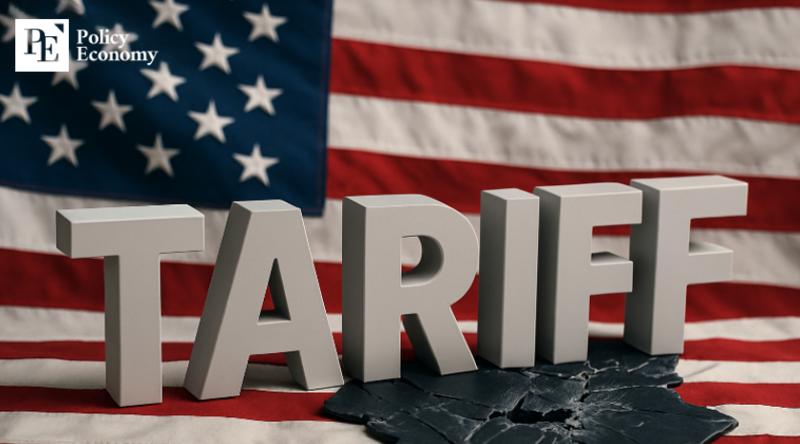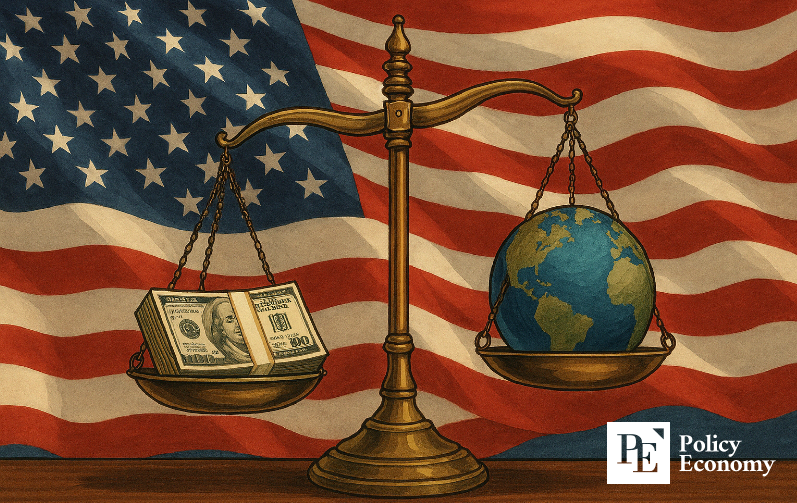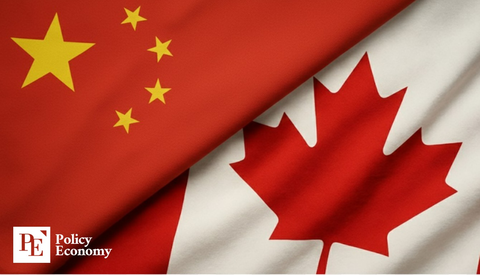Has the U.S. Really “Won”? The Cost-Benefit Fallout of Trump’s Tariff Strategy
Input
Modified
Higher Tax Revenues Mask Rising Consumer Burdens
Market Liberalization Abroad Creates New Opportunities
Free Trade Blocs That Exclude the U.S. Could Emerge
Tariff policies under former President Donald Trump may have provided limited fiscal gains for the U.S. government, but analysts argue the real impact has been increased costs for American consumers and businesses. The U.S. effective tariff rate has climbed to its highest level in 91 years, shrinking imports while fueling inflation and eroding purchasing power. In response to the U.S. tariff regime, the European Union has threatened retaliation while keeping the door open for negotiation, and ASEAN is now considering collective action. As a result, some experts warn that U.S. protectionism may unintentionally accelerate trade realignments that leave America on the sidelines.

Structural Costs Behind the Trade Balance
Jason Furman, a Harvard University economist and former chair of the Council of Economic Advisers under President Barack Obama, wrote in an op-ed for the Financial Times that tariffs under a second Trump administration would represent “the second-worst possible outcome” for the U.S. economy. “We avoided the worst-case scenario,” Furman wrote, “but we are getting poorer.” A leading critic of protectionist trade policies, Furman argues that the U.S. is incurring significant hidden costs.
He warned that terms like “winners,” “losers,” or “concessions” are misleading in the context of international trade. Trump’s tariff hikes, he noted, raised the average U.S. tariff rate from 3% to around 20%, diminishing consumer value for imported goods and weakening the competitiveness of American exports.
Furman’s concerns are now being reflected in economic data. According to a study by Yale’s TBL Budget Lab, the U.S. effective tariff rate surged from 2.5% at the beginning of the year to 18.3% within seven months—the highest level since 1934. This effective rate, which measures the actual tariff burden across all imports, is projected to raise U.S. inflation by 1.8% in 2025. TBL estimates that this will translate to a reduction in average household income of $2,400.
Tariffs have also distorted trade balance metrics. Data from the Bureau of Economic Analysis shows that as of June, the U.S. trade deficit fell by 16% from the previous month to $60.2 billion—the lowest level since September 2023. On the surface, this may seem like a win for U.S. trade, but Furman argues that the reality is less favorable.
The narrowing deficit is primarily the result of declining imports. This raises input costs for U.S. manufacturers, who rely on foreign raw materials and components, and those increased costs are passed on to consumers. According to Furman, these structural burdens outweigh any short-term benefits, meaning that headline trade figures are masking deeper economic harm.
The EU: Minimizing Friction, Maximizing Advantage
This dynamic has also influenced how key U.S. trading partners respond. While the European Union initially threatened up to $126 billion in retaliatory tariffs in response to Trump’s 30% duties on steel and aluminum—targeting U.S. agricultural and industrial goods—it later agreed to delay implementation for six months.
The EU’s strategy is to avoid direct confrontation while preserving negotiating leverage. Officials describe this as a “two-track” approach that balances diplomatic engagement with the credible threat of retaliation. By holding off, the EU seeks to limit unnecessary conflict while keeping pressure on the U.S.
Domestic considerations also played a role. EU policymakers are wary of how tariffs on U.S. goods—particularly food and consumer items—could drive up prices for European consumers. The tariff delay, therefore, serves a dual purpose: stabilizing domestic markets while avoiding escalation. The EU’s flexible response reflects a broader effort to avoid emotional reactions and prioritize pragmatic economic outcomes.

Coordinated Responses Enter Long-Term Phase
Even as it delays tariffs, the EU has explored coordinated responses with other key partners such as Japan and Canada. The European Commission has argued that U.S. tariffs violate World Trade Organization rules and has proposed a multilateral approach. However, with time for negotiation limited, many countries have opted for bilateral talks. Diverging national interests have made a unified response difficult.
Southeast Asian nations under the ASEAN umbrella have also begun discussions on collective action. Member states have debated concrete responses to U.S. tariffs, including potential WTO complaints and reciprocal tariffs on American imports. While no formal agreement has been reached, the fact that ASEAN—often seen as a bloc of smaller economies—is even considering collective measures marks a significant shift.
Experts note that varied trade relationships and differing levels of dependency on U.S. markets make it difficult to form a cohesive response. Nations with strong trade ties to the U.S. are prioritizing their own negotiations, limiting the impact of any coordinated effort. Even within the EU, some members have pushed for deeper negotiations rather than retaliation, while Japan and Canada have focused on bilateral trade deals. Although many governments support the idea of joint action, few have taken concrete steps.
Still, the possibility of a new trade order emerging in response to U.S. unilateralism remains. As frustration with U.S.-centric policies grows, there is speculation that major economies in Europe and Asia may pursue alternative trade partnerships. While coordinated action has yet to materialize, experts argue that America’s retreat from multilateralism could ultimately catalyze the creation of new free trade blocs—ironically driven by U.S. protectionism itself.





















